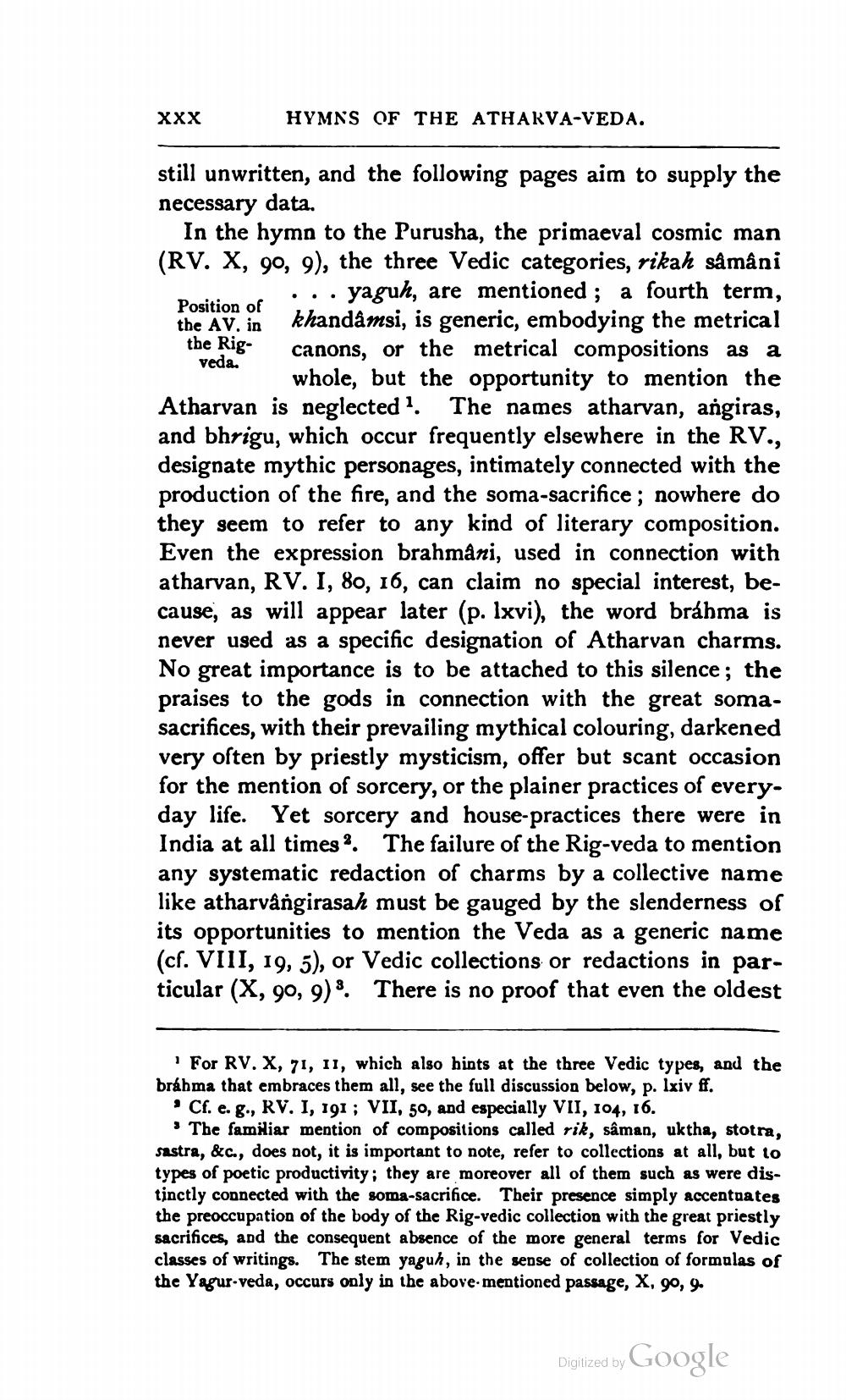________________
XXX
HYMNS OF THE ATHARVA-VEDA.
still unwritten, and the following pages aim to supply the necessary data.
In the hymn to the Purusha, the primaeval cosmic man (RV. X, 90, 9), the three Vedic categories, rikah sâmâni yaguh, are mentioned; a fourth term, khandâmsi, is generic, embodying the metrical canons, or the metrical compositions as a whole, but the opportunity to mention the Atharvan is neglected 1. The names atharvan, angiras, and bhrigu, which occur frequently elsewhere in the RV., designate mythic personages, intimately connected with the production of the fire, and the soma-sacrifice; nowhere do they seem to refer to any kind of literary composition. Even the expression brahmâni, used in connection with atharvan, RV. I, 80, 16, can claim no special interest, because, as will appear later (p. lxvi), the word brahma is never used as a specific designation of Atharvan charms. No great importance is to be attached to this silence; the praises to the gods in connection with the great somasacrifices, with their prevailing mythical colouring, darkened very often by priestly mysticism, offer but scant occasion for the mention of sorcery, or the plainer practices of everyday life. Yet sorcery and house-practices there were in India at all times. The failure of the Rig-veda to mention any systematic redaction of charms by a collective name like atharvângirasah must be gauged by the slenderness of its opportunities to mention the Veda as a generic name (cf. VIII, 19, 5), or Vedic collections or redactions in particular (X, 90, 9). There is no proof that even the oldest
Position of the AV. in the Rigveda.
For RV. X, 71, II, which also hints at the three Vedic types, and the brahma that embraces them all, see the full discussion below, p. lxiv ff.
'Cf. e. g., RV. I, 191; VII, 50, and especially VII, 104, 16.
The familiar mention of compositions called rik, sâman, uktha, stotra, sastra, &c., does not, it is important to note, refer to collections at all, but to types of poetic productivity; they are moreover all of them such as were distinctly connected with the soma-sacrifice. Their presence simply accentuates the preoccupation of the body of the Rig-vedic collection with the great priestly sacrifices, and the consequent absence of the more general terms for Vedic classes of writings. The stem yaguh, in the sense of collection of formulas of the Yagur-veda, occurs only in the above-mentioned passage, X, 90, 9.
Digitized by
Google




